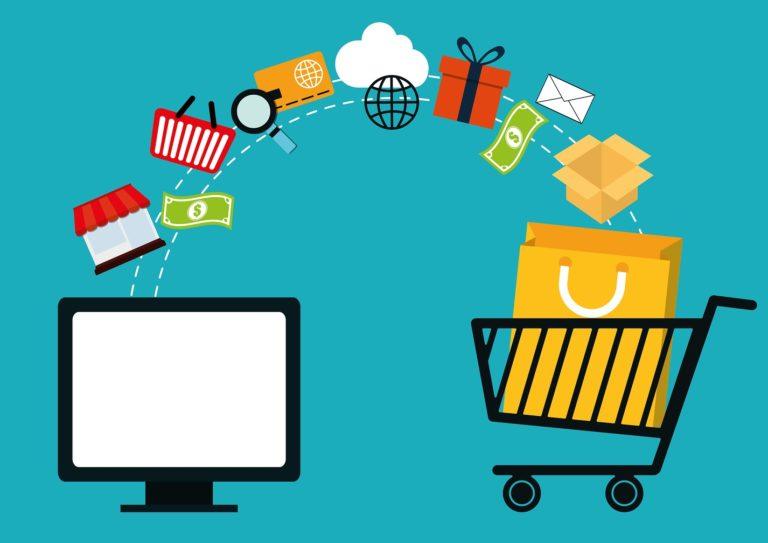Programmatic has been around for a while now, but definitely not long enough to make us experts. Thus let’s just stress the following from the get-go: even the top experts in the field have stated that: “programmatic space has become so convoluted, the challenge now is rationalizing and managing the complex lumascapes advertisers have created for themselves.” And that is exactly why ten or so years in, the Programmatic is bigger than ever and well… still murky.

Truly, the complexity of the technology involved is very impressive and it’s the sort of complexity that leads to confusion, and that is exactly why we should start the new year by finally learning things about something that’s been aggressively present in everyone’s lives for over a decade. Keep on reading to learn what it is, how it works, and how programmatic will account for 88% of all US digital display USD by the end of this year, having been around for just over a decade.
What exactly is programmatic advertising (PA)?
Simply put, it is an automated way of purchasing and selling online ads. This particular method gives brands the ability to advertise with minimum human interaction thanks to the AI-powered algorithms.
This highly automated and data-driven process offers an ideal way to reach the audience with one-to-one messaging that provides a lasting impact and it is exactly why PA rapidly became an essential method of buying digital media.
Real-Time Bidding (RTB)
Real-time bidding is a way of programmatic selling and buying of ad impressions in real-time, hence the name. It is a real-time bidding system carried out through real-time auctions, a highly complex process with an uncanny number of moving parts all executed subsequently and within milliseconds, or, if we’re to translate that into human language: just in time the page loads. So, real-time bidding monetizes the advertising space available on the publisher’s website by selling them to the highest bidder through an auction system. RTB is highly beneficial due to better targeting and ads being sold and purchased based on the “per-case” option as it allows advertisers to reach their target audience. Moreover, targeting in PA creates a very specific audience, just as an example, advertisers can specify demographics, location, interests, behavior, device, as well as time, weather, proximity time frame, etc.
Now, on to the process: when any given user lands on a website he immediately generates to be auctioned off the impression. Then the user information (cookie linked to the user’s profile) and the page impression are both presented to buyers that have expressed interest in such profiles. If a user in question is of interest to a number of advertisers an online auction takes place and the advertiser that had the highest bid broadcasts the winning ad to the user. All of this is accomplished in approximately 120 ms.
Ad Exchanges (AE)
Ad exchanges are in actuality digital marketplaces. It’s where advertisers and publishers trade ad inventory during auctions with RTB. This is where tech really shines – a cutting-edge system of algorithms gives the buy-side the ability to instantly reach their target audience. On the supply-side of things – publishers offer their inventory on ad exchanges through their sell-side platforms, so when a user loads a supply-side app or website the impression is up for grabs on the auction while the user’s info simultaneously gathered by the sell-side soft and sent to the ad exchange. Then a bid request is sent from ad exchange to the demand-side where info is analyzed to determine if this particular impression is of any interest to the advertiser. The ad exchange then analyzes all of the responses and simultaneously eliminates all of the ad requests that don’t meet the publisher’s requirements. And — voila — the impression is finally sold to the highest bidder and the user is viewing the winning ad. Again, all of that done in 120 ms.
Demand-side platforms (DSP)
Demand-side platforms offer the ability to automatically buy the ad placements. Google Ads are an example of a DSP, though, they offer ad placement limited only to their inventory and, contrary to popular opinion, there is a whole world beyond the Adwords, for example, Facebook ads are out of reach for those buying ads only on Google Ads. The DSPs work by connecting those signed up with a DSP to Ad exchange and we’ve already covered what happens there. DSP’s are the crème-de-la-crème of programmatic marketing on the buy-side. A Demand-side Platform is the advertiser’s only tool in programmatic to help organize ad purchasing.
Supply/Sell-side platforms (SSP)
SSPs, like for example Admixer SSP, are, of course, platforms that offer publishers a way to effectively manage their display space, it is where sell-side offers its advertising space as profitably as possible. The SSPs are designed to get the highest bids for publishers and altogether make the whole process of selling their inventory an easy and profitable one. The sell-side platforms are made to communicate the publisher’s entire available inventory to the ad exchange and sell it to the highest bidder through RTB. Good SSPs are essential for anyone selling their inventory, if you’re a publisher looking for one right now, or found that your SSP is so last year without all of the awesome new perks — change it ASAP.
Nowadays, a professional cutting-edge sell-side is able to offer inventory to buy-side on a global scale through smart selling and optimization, with such SSPs publishers are able to increase yield as well as fill rates through the process of enabling competition, and easily monetizing their traffic. Just for reference, the above mentioned Admixer offers their clients auctions among more than a hundred of DPS and numerous Header Bidders. Not to mention, a great SSP will definitely adapt to all devices and gain new traffic as well as offer multi-format support. And a cherry on top: a professional SSP offers publishers regular stats checks, comprehensive reports, and different data analyses to monitor and as a result effectively analyze income.
Data Management Platforms (DMPs)
It’s all in the name: DMP are essentially platforms for data management, so it is collecting, storing and making sense of the gathered info. The DMPs are used in combination with DSPs and SSPs and are quite essential for both: advertisers benefit from clearly seeing the analysis as well as results of their marketing and ad campaigns, and publishers from the in-depth examination of their inventory monetization. There’s no programmatic marketing without data management and smart informed programmatic marketing is achieved only with the DSPs as all of the data sorting and decision-making process centers there.
Header Bidding (HB)
Header bidding is a champion to the sellers. This tech was specifically designed to help sell-side to not only receive bids from a multitude of advertisers at the same time but also to actually sell their desktop, mobile and video inventory for the highest possible price. Header-bidding appears on the publisher’s webpage in HTML form, so it’s like installation of code on the website that ultimately opens-up endless opportunities for publishers. Moreover, these days advanced companies offer a boosted approach to the programmatic sales which is provided by combining the header bidding with the real-time bidding to offer hybrid auction. In such cases, RTB and header bidding auctions take place and the winners of those two compete once more to determine the final winner. It іs hands down the best way known of increasing the level of publisher’s monetization.
The Top Benefits
The top benefit, as already established, is that all of the processes are conducted in an automated manner, taking possible human error away from the equation. The soft algorithms figure out user analytics and determine the relevant messaging to any particular user at any given time. Programmatic offers the best targeting and personalization options, furthermore, the ads can instantly change depending on a multitude of different factors like user’s device, location, weather, time, etc. Programmatic also offers through the roof efficiency as a result of elimination of human factor, furthermore, elimination of routine work that took up way too much time and manpower is now better spent elsewhere. The in-depth analysis offered by PA equals efficient budget spending. Lastly, the feedback has also made the cut: programmatic tech is able to offer consistent, immediate reports and feedbacks based on the gathered info for efficient campaign optimization.
What’s next?
The future of programmatic is looking bright. PA is now a crucial medium for brands to advertise their products and publishers to monetize their webpage ad space. Last year the expected spend was almost 60 billion USD on programmatic ads and by next year that number in America alone is to reach an astonishing 88% of all US digital display ad dollars. And, happy to announce, different products are now being tested and adopted to reduce fraud. Programmatic fraud is, unfortunately, still a huge drawback, in 2018 alone, advertisers lost more than 19 billion USD to fraud. Fraudulent tactics are getting more sophisticated and are now able to identify and bypass verification tags. There are now talks on bringing implementing audio ads on voice search devices and with 5G we are now looking forward to the continued growth of video use in advertising. As we said — programmatic future is looking bright



